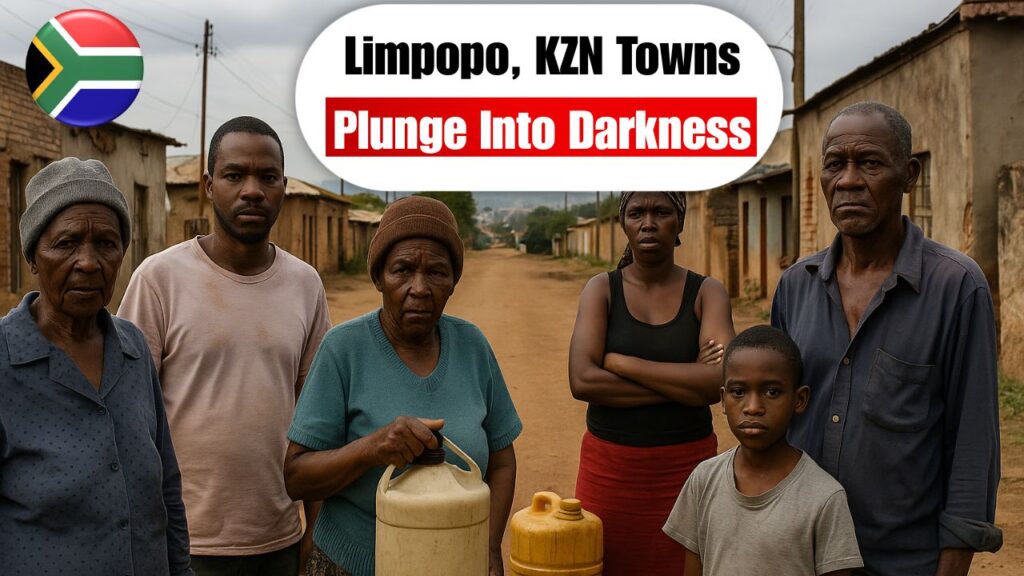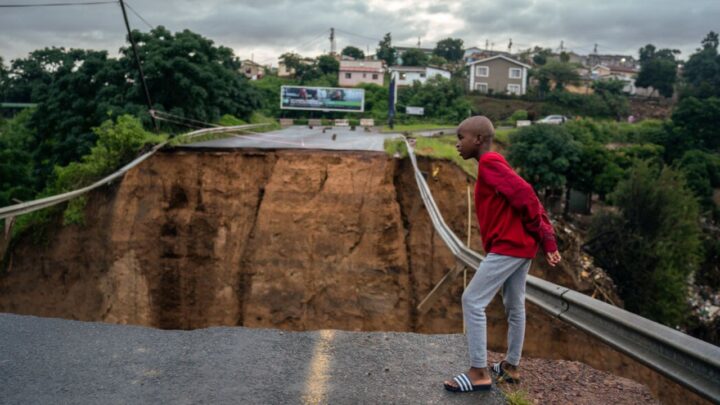South Africa is facing a growing infrastructure crisis as multiple towns across Limpopo and KwaZulu-Natal (KZN) experience severe power and water outages. Residents are struggling to cope as municipal systems collapse, leaving entire communities without essential services for days. This situation highlights deep-rooted issues of poor governance, neglected maintenance, and financial mismanagement within municipalities. From long hours of load shedding to dried-up taps, the chaos is forcing people to find costly private solutions. The government has promised urgent intervention, but locals are demanding faster, more transparent action to restore electricity and water stability.

Limpopo Municipal Collapse Deepens as Services Fail
The collapse of key municipalities in Limpopo has become a national concern. Many areas are now experiencing days-long power cuts and limited water supply, affecting homes, hospitals, and schools. In towns like Polokwane and Thabazimbi, infrastructure decay and unpaid Eskom bills have worsened the crisis. The provincial government has deployed emergency teams, but progress remains slow. Experts warn that without sustainable planning and financial recovery, Limpopo could see prolonged instability. Citizens are demanding accountability from local councils and calling for immediate steps to restore reliable access to electricity and clean water.
KZN Towns Facing Unprecedented Power and Water Disruptions
KwaZulu-Natal’s smaller towns and rural areas are now among the worst affected by the ongoing municipal failures. Ageing infrastructure, corruption, and poor water management have left communities like Newcastle and Msunduzi in chaos. Residents are reporting daily blackouts and frequent water interruptions, impacting small businesses and essential services. The KZN government has confirmed it is working closely with Eskom and Umgeni Water to stabilize supply, but residents remain skeptical. Analysts suggest that unless strong leadership and transparency are introduced, KZN could face a long-term utility crisis with far-reaching economic effects.
South African Municipal Infrastructure in Critical Condition
Across South Africa, the story of collapsing municipal systems is becoming far too common. From Limpopo to KZN, aging grids, water pipe bursts, and corruption scandals have crippled public service delivery. The National Treasury has warned that several municipalities are technically insolvent, unable to pay debts or maintain critical infrastructure. The South African government has launched recovery programs focusing on skills training, maintenance funding, and public-private partnerships. However, experts argue that sustainable recovery will require strict oversight, reduced political interference, and transparent management to avoid further service delivery breakdowns nationwide.
| Province | Main Issue | Key Towns Affected | Government Response | Current Status |
|---|---|---|---|---|
| Limpopo | Power cuts, water shortages | Polokwane, Thabazimbi | Emergency repair teams deployed | Ongoing instability |
| KZN | Water contamination, power outages | Newcastle, Msunduzi | Joint recovery with Eskom & Umgeni Water | Partially restored |
| North West | Infrastructure decay | Mahikeng, Rustenburg | Provincial audit underway | Under review |
| Eastern Cape | Budget deficit & corruption | Buffalo City, Mthatha | Financial recovery plan | In progress |

How South Africans Are Coping with Municipal Collapse
With power and water cuts becoming routine, South Africans are finding alternative ways to survive the crisis. Households are installing solar panels, water tanks, and generators to maintain basic living conditions. Small businesses are pooling resources to stay operational during outages, while communities are forming local watch groups to pressure municipalities for faster repairs. NGOs and private companies have also stepped in to assist schools and hospitals. Despite the hardships, citizens are showing resilience, but experts warn that without urgent government intervention, these temporary solutions won’t be enough to sustain long-term recovery.
Frequently Asked Questions (FAQs)
1. Which provinces are most affected by municipal collapse?
Limpopo and KwaZulu-Natal are currently the worst affected by ongoing power and water disruptions.
2. What are the main causes of the crisis?
Corruption, poor maintenance, unpaid utility bills, and mismanagement have caused widespread infrastructure failure.
3. Is the South African government taking action?
Yes, emergency teams and national recovery programs have been launched to stabilize municipal services.
4. How are residents coping with outages?
Many households are relying on solar systems, water tanks, and generators as temporary survival measures.






